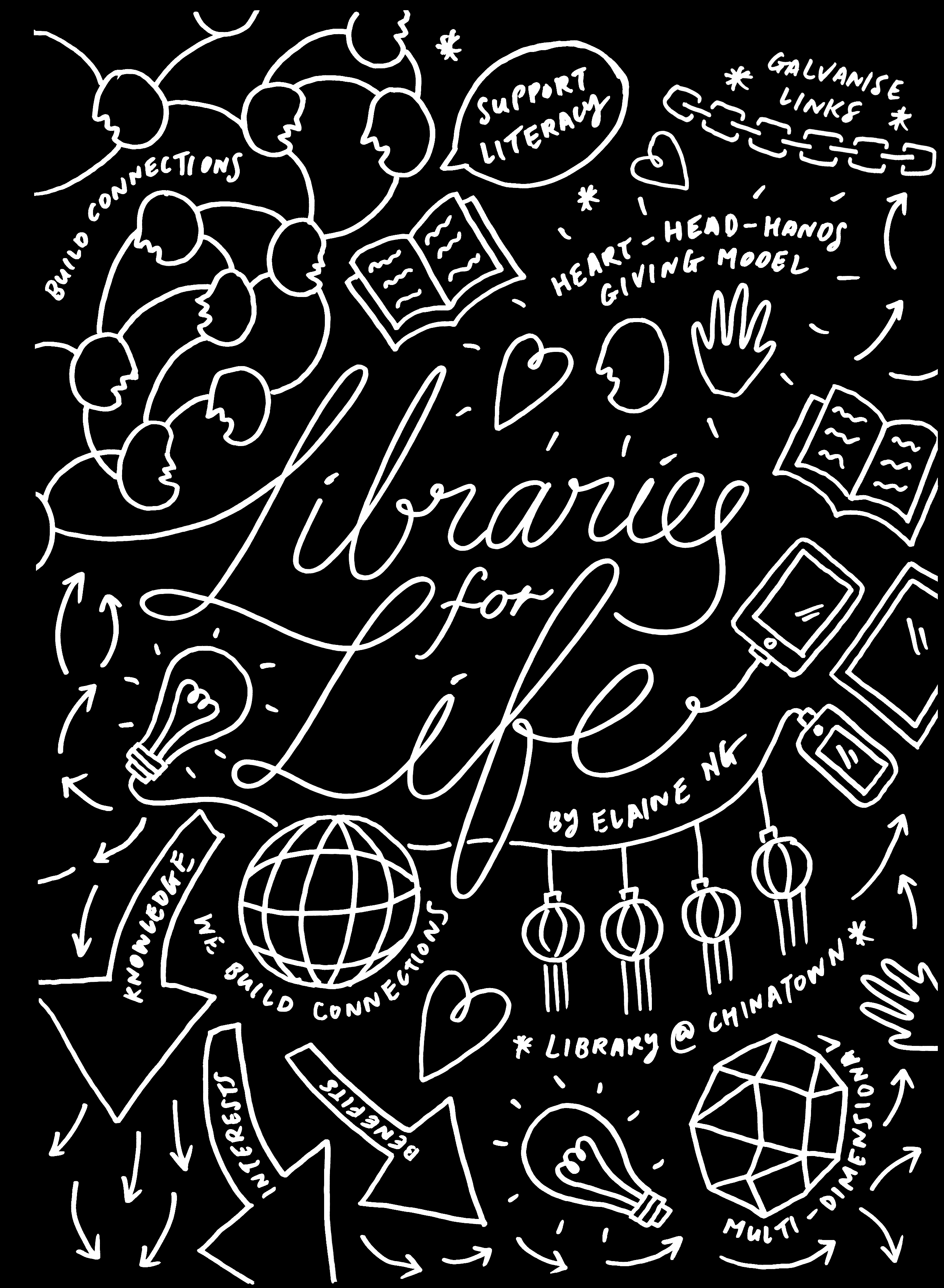Libraries for Life

Over the years, libraries have evolved from simply gatekeepers of knowledge to gateways of discovery and learning. Libraries not only provide access to materials that support literacy but also actively facilitate an environment of innovation and creativity that is open and free to all. The positive value that libraries add to the communities they serve is one that is widely acknowledged but hard to quantify. Today, in the face of shrinking budgets and competing needs for funding, libraries, more than ever before, need to articulate how they will continue to be relevant and meaningful to the lives of the people they serve.
In Singapore, libraries hold a special place in the hearts of ordinary citizens. It is a place where memories are grown and nurtured. From the time a child is born until their silver years, from exploring other worlds through storytelling and books to taking instruction in iPad and social media classes as a senior citizen, the library is like a companion who stays for life regardless of one’s background. The idea of being a companion for life is part of the National Library Board’s (NLB) vision of creating libraries for life.
The challenge for us as a library is to continue to retain our value as changing media and technologies quicken the pace of digital transformation. While we have adapted by integrating newer technologies, from growing our eBooks collection to developing mobile technologies, we recognise that this is not enough. Beyond riding the digital trends, we have to show that libraries can offer much more to the community. We build connections where people would otherwise not find them, between streams of knowledge, between fields of interests and between people and organisations who would otherwise not have come together.
Libraries around the world have realised that they need to innovate to stay relevant and valued. In our most recently opened public library, library@chinatown, NLB endeavoured to create a new model that would not only be sustainable in terms of funding, but would also allow people to share in the library’s ownership.
This model is what we fondly refer to as the “heart-head-hands” giving model. library@chinatown brought together corporate and philanthropic partners: the “hearts” who sponsored the setup and operation costs; domain experts, the “heads” who provided their expertise in helping us curate a Chinese arts and culture collection; and, most importantly, the “hands” – volunteers who keep the library running. This model brings together the community in a shared project where each contributed what they could in a meaningful way to bring about a greater good that benefits everyone. The result is that the library becomes part of everyone’s social consciousness, an institution that everyone has a responsibility to protect.
As Singapore is a relatively young country, institutions like libraries perform important community functions that contribute to the crystallisation of our national identity. Libraries provide spaces for people from all walks of life to come together, and eventually the time spent in libraries becomes part of our shared experience. A nation is built out of strong communities, and in land-scarce Singapore, such free community spaces have become even more precious to citizens. Our shared literature, our shared desire to acquire knowledge and the opportunity to meet others who have similar interests and needs are all facilitated by libraries.
The Singapore Memory Project – a nationwide initiative that collects the precious moments and memories relating to Singapore – is one example of how NLB has tried to galvanise the links between the people of Singapore. By engaging individuals to contribute their memories, the library fosters social cohesion through people’s desire to connect with one another via a shared sense of the past. Such projects allow the library to not only become a gateway of knowledge but also act as a cultural repository showing where we have come from as a people. The past contextualises our present and paves the way for the future.
NLB is excited about the future. We have come a long way from the days of brick-and-mortar buildings to a multidimensional glass-and-steel library that fulfils a variety of purposes. While digital technology has changed the landscape within which libraries operate, and libraries worldwide have been forced to negotiate the balance between physical and digital libraries, it also presents a new opportunity for libraries to re-examine what they mean to the communities they serve. From the creation of inspiring spaces and the development of cutting-edge digital technology, libraries have been preparing to meet the future. How libraries look and what libraries do may change but the inherent desire to create better lives for people through discovery, learning and creation endures.
I hope this issue of BiblioAsia will inspire you with the stories contained within as they affirm the value of libraries, from what they presently do for the community and what they plan – and eventually accomplish – for the future.
Elaine Ng, Chief Executive Officer, National Library Board of Singapore

